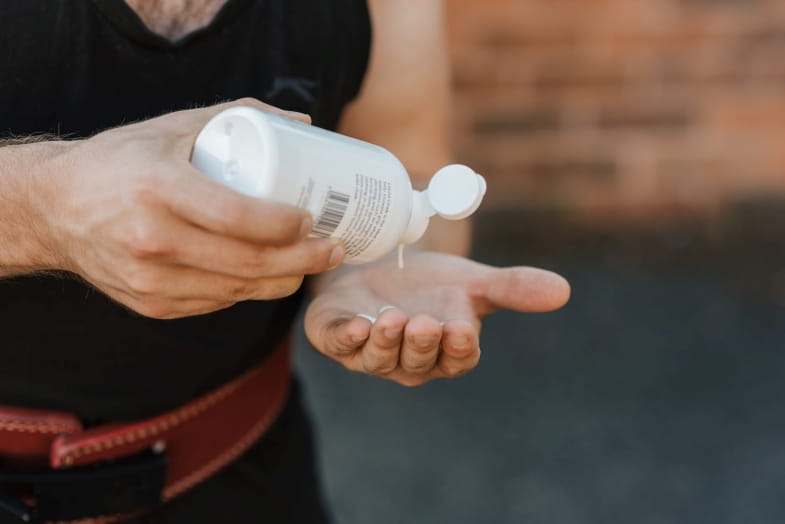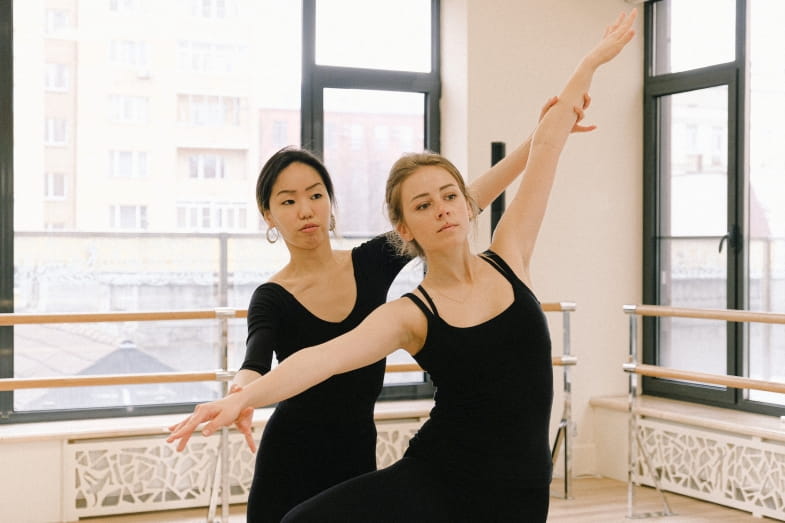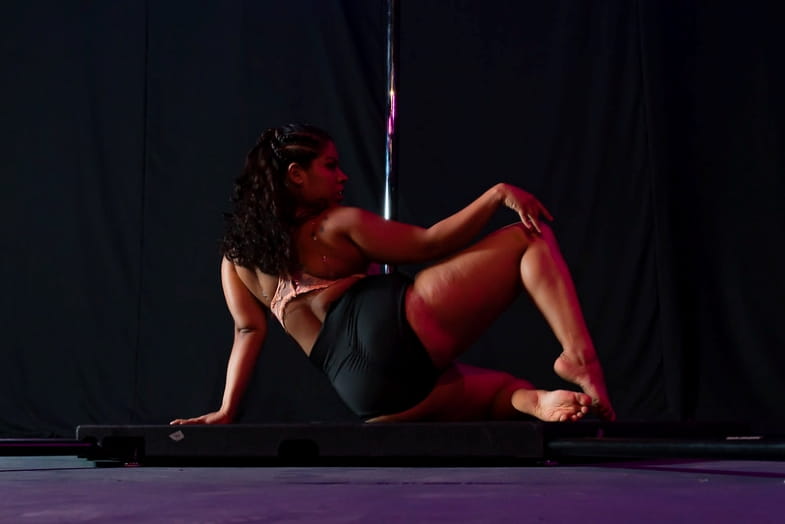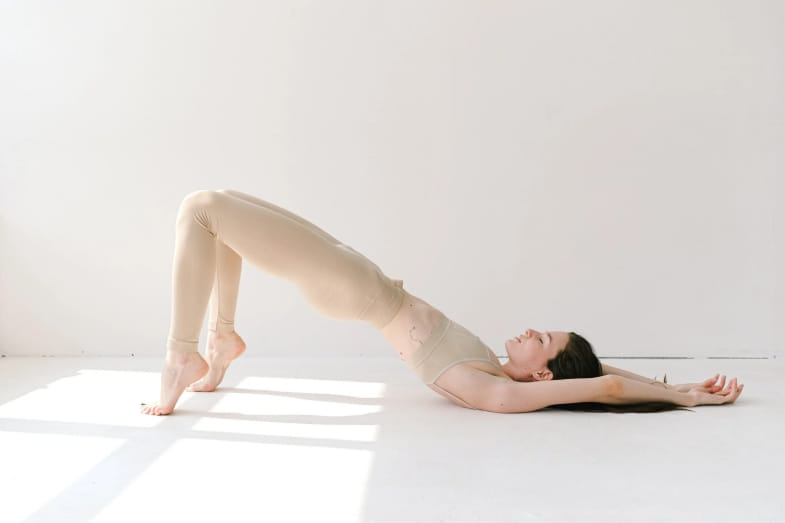Pole dancing is a fun way to stay fit and express yourself. Yet, as a beginner, starting this exciting activity can be intimidating.
If you’re interested in pole dancing, there are a few tips to help you begin. This article will discuss our top 10 tips for beginner pole dancers to help you learn how to dance well.
You will develop skills, strength, and confidence by following these tips. Then you can take your pole dancing to the next level. Keep scrolling to learn more!
10 Tips For Beginner Pole Dancers
From proper warm-up and grip support to patients and seeking help, these tips will help you build a strong foundation. Then you can progress in pole dancing.
Invest In Proper Clothing
The first important thing for pole dancing beginners is to invest in the right outfit. It can enhance performance and prevent injury.
Pole dancing needs a lot of skin contact with the pole. So you should wear clothing that exposes enough skin to create grip. Besides, your clothing should cover enough to protect sensitive areas from scratches and bruises.
Most pole dancers like to wear shorts. They allow them to grip tightly to the thigh. Also, many people wear sports bras or tank tops to move freely without restricting their moves.
Besides grip and protection, suitable clothing can enhance a pole dancer’s confidence. Specifically, costumes help pole dancers feel comfortable and confident. Hence, they can focus on their poses and techniques.
Also, clothing that fits and flatters the body can help a beginner pole dancer feel more comfortable in front of others.
Remember to choose breathable and durable materials when buying pole dancing clothes. They allow for a full range of motion and are easy to care for.
Besides, consider the fit of the clothes. Too loose or tight clothing can interfere with activity and cause discomfort.
With the right outfit, pole dancing beginners can focus on improving their technique and achieving their goals.
Read more: What To Wear To Pole Dancing Class?
Use A Grip Aid
Holding onto the pole can be especially difficult for those just beginning to pole dance. It can increase their risk of injury. Thus, using a grip aid is an essential tip for those new to pole dancing.
A gripping aid is any product that improves grip and prevents slipping on a pole. There are different grip aid types:
- Liquid chalk
- Sprays
- Glove
Each type has its pros and cons. So you need to try different types to find the one that works best.
First, liquid chalk is a mixture of alcohol and magnesium carbonate. Its benefit is that it dries quickly and provides a long-lasting grip.
Besides, it is easy to use and leaves no residue on the column. Therefore, it is the favorite product of pole dancers.
Second, a grip spray is a liquid sprayed directly onto a hand or pole. This type lasts for several hours.
Finally, gloves are an option for pole dancers who have difficulty gripping. Pole dancing gloves are made of materials such as neoprene or suede.
But some pole dancers find the gloves uncomfortable or restrictive. So it’s critical to try them out before using them.
Read more: What Can I Use Instead Of Pole Grip?
Warm Up Before Each Session
It’s essential for pole dancing beginners to warm up properly before starting their routine to avoid injury and get the most out of each workout.
Warm-up is a tip for beginners that can help prepare the body for the demands of pole dancing.
A proper warm-up routine should include exercises that target all the major muscle groups used in pole dancing. These include the arms, shoulders, back, core, and legs. Some warm-up exercises for pole dancing include:
- Jogging on the spot
- Rope skipping
- Squat
- Shaking
- Stretching
Stretching is critical for pole dancers because it improves flexibility and range of motion. They are essential for performing pole dancing movements.
We recommend several stretches, such as the butterfly, hamstring, quadriceps, and shoulder.
Besides improving physical performance, warming up can help prevent injury. By gradually increasing blood flow and heart rate, warm-up helps prepare muscles, joints, and ligaments for the stress of pole dancing. Also, it helps reduce soreness and stiffness after a workout.
Finally, warm-ups can help pole dancers mentally prepare for their routine. Pole dancers can feel more confident and comfortable in their lessons by focusing on their breath and having the right mindset.
Start With Basic Moves
These basic movements help build a strong foundation and prevent injury. We recommend that you can start spinning, climbing, and sitting.
Spinning is the circular motion around the pole. Meanwhile, climbing involves pulling yourself up with your arms and legs. Finally, sitting is the form that your legs wrap around your equipment.
These moves seem simple, but they need strength and coordination. Thus, mastering them is essential to building the strength and technique for more advanced tricks.
By starting with the basic moves, beginners can learn proper technique and form. They can prevent injury and achieve optimal results. Thus, master how to move the correct muscle groups.
This tip allows beginners to build confidence and feel more comfortable with the pole. After mastering the basic moves, they can gradually progress to more advanced tricks. These movements can be challenging and intimidating at first.
In short, starting with the basics helps build a strong foundation, prevent injury, learn proper technique, and build confidence.
Train Regularly
Pole dancing requires a lot of strength, flexibility, and technique. Thus, practice regularly to improve in all these areas.
First, continuous training helps build muscle memory and improve muscle strength. It makes it easier to perform movements and tricks with greater ease and accuracy.
As beginners progress in their training, they can increase the intensity of their workouts to improve overall fitness.
Second, regular exercise helps prevent injury. By regularly practicing pole dancing moves and tricks, beginners can build their strength and flexibility.
So they can reduce the risk of injury from poor posture. Also, this tip improves balance and coordination.
Finally, when beginners see progress in their practice, they are more likely to feel motivated to keep practicing and pursue their pole dancing goals.
Besides, consistent training helps build community and friendships with other pole dancers. Hence, it creates a supportive environment that encourages continued practice and growth.
Practice Both Sides
As a pole dancer, you must practice movements and tricks on both sides of the body. As a beginner, you can work out only on the dominant side of your body. It is usually the right side for right-handed people and the left for left-handers.
But this can lead to an imbalance in strength between the two sides of the body. As a result, it can increase the risk of injury and limit progress in pole dancing.
Working on both sides of the body helps address these imbalances by ensuring that both sides of the body are trained and developed equally. This tip helps to improve flexibility, coordination, and balance.
Also, practice on both sides of the body can help stimulate the brain. Pole dancers can improve the brain’s overall cognitive ability by challenging the brain to learn and perform movements on both sides of the body.
Listen To Your Body
Listening to your body means being aware of discomfort, pain, and fatigue during and after exercise. Stop and assess the situation if something is causing you pain. Continuing to work through pain can lead to injury and training failure.
Beginner pole dancers should also be aware of their body’s limits. Then, adjust your practice accordingly. Pushing too quickly can lead to burnout or injury.
Also, proper rest and recovery after each training session are essential. It means you must get enough sleep, stay hydrated, and stretch.
Contact a qualified instructor with any practice-related concerns or questions. A good instructor can guide on proper technique and safety precautions.
Besides, that specialist can provide advice for any pre-existing injuries or conditions.
Read more: Common Pole Dance Injuries
Be Patient
Beginners must remember that progress takes time. Therefore, learning and improving the technique is a gradual process.
The basics need the patience to practice when it comes to getting started. Besides, everyone makes progress at their own pace. Some people can progress quickly. Meanwhile, others may take longer to master some moves and tricks.
Due to measurement, focus on personal progress and improvement rather than comparing yourself to others.
Also, beginners must avoid getting discouraged by failures or challenges. Learning to pole dance requires a lot of trial and error.
So it is okay to encounter them in the learning process. These failures are chances to grow and learn, not reasons to give up.
This tip can help improve your overall mental health. By acknowledging that progress takes time and effort, beginners can reduce the stress and anxiety associated with pole dancing and enjoy learning and improving.
Seek Guidance
A qualified instructor can provide valuable guidance on these essential aspects of pole dancing. In addition, this person will provide support and motivation throughout the learning process.
A good instructor can teach beginners the proper technique. This knowledge is critical to avoid injury and achieve optimal performance. Besides, these techniques ensure that movements and tricks are safe and effective.
Besides teaching proper techniques, an instructor can provide valuable guidance on safety precautions. As we mentioned, pole dancing involves a lot of physical activity. So it can be risky if you do not follow proper safety measures.
At this point, an instructor can teach beginners how to use a grip aid and how to spot each other during practice. Besides, this person helps you know how to warm up and cool down properly to avoid injury.
Also, an instructor can provide support and motivation throughout the learning process. Pole dancing can be challenging and frustrating.
But a good instructor can provide encouragement, feedback, and constructive criticism. They are to help beginners improve and achieve their goals.
So beginners must seek a qualified and experienced instructor rather than trying to learn from unreliable sources.
Have Fun
Pole dancing is a challenging and demanding activity but also a fun and engaging way to exercise. It can help you express yourself and build confidence.
Thus, for beginners, it is essential to remember that pole dancing is a journey. So the process of learning and improving must be enjoyable and satisfying.
By focusing on fun, beginners can reduce the stress and anxiety associated with pole dancing. Hence, they can create a positive mindset to learn and improve.
In this process, it’s critical to approach pole dancing with curiosity and playfulness rather than pressure or perfectionism.
Furthermore, the fun can help beginners stay motivated and committed to the practice. This consistency is a factor in improving and achieving personal goals in pole dancing.
Also, having fun can help beginners develop a healthy relationship with their body and self-image. Pole dancing is a form of self-expression and enjoying the learning process.
Finally, the pole dancing community is welcoming and inclusive. It’s a great way to meet new people, make friends and share the joy of pole dancing with others.
FAQs
Is Pole Dancing Difficult For Beginners?
Yes, it is. Pole dancing can be difficult for beginners. It needs strength, flexibility, and coordination. So you may take time to develop. Yet, with regular practice and proper guidance, beginners can gradually improve their skills and progress.
How Often Should A Beginner Pole Dance?
Beginners should practice pole dancing at least twice a week to build strength and improve their skills. But it is essential to listen to your body.
Besides, avoid overtraining, which can lead to injury. Also, incorporate rest days and proper recovery techniques into your routine.
Is 25 Too Old To Start Pole Dancing?
No, it is not. People of all ages and fitness levels can enjoy pole dancing. It’s never too late to start something new.
Hence, pole dancing can be fun and rewarding if you want to improve your fitness, build confidence, and express yourself.
Can Pole Dancing Be Self-Taught?
Yes. While you can learn some pole dancing moves and habits through online tutorials or videos, beginners should seek guidance from a qualified instructor.
An instructor can teach proper techniques and provide safety precautions. Besides, this person can give personalized feedback and support. They are essential to making safe and effective progress in pole dancing.
How Can I Get Better At Pole Dance?
To get better at pole dancing, practice regularly and consistently. Also, listen to your body and seek guidance from a qualified instructor.
Besides, it’s essential to focus on proper technique and building strength and flexibility through conditioning exercises.
Don’t forget to challenge yourself with new moves and routines. Additionally, incorporating rest and recovery techniques can help prevent injury and maximize progress.
Conclusion
In short, pole dancing is challenging and rewarding for people of all ages and fitness levels to enjoy. These top 10 tips for beginner pole dancers can help you learn how to become good at pole dancing and progress.
You can overcome any obstacle and achieve your pole dancing goals with patience, dedication, and a positive attitude. So get ready to shine and spin for fitness, confidence, and fun!
Stay tuned for more articles about pole dancers because we are updating you with the latest knowledge!
Read more:





